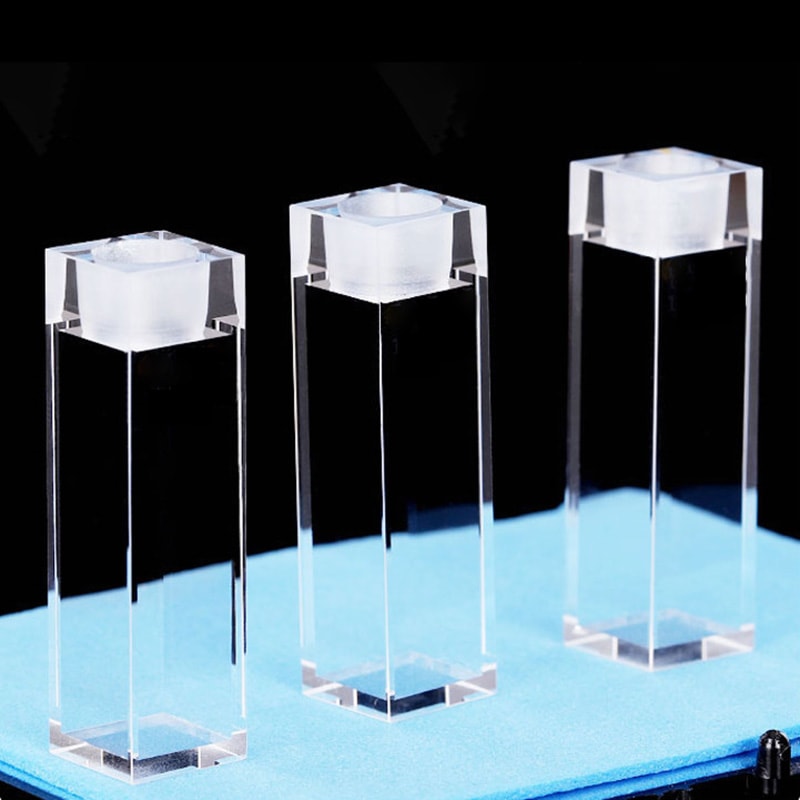The Influence of Quartz Vials on Taste Strength in Research Tests
The Influence of Quartz Vials on Taste Strength in Research Tests
Blog Article

The Advantages of Cuvettes and Quartz Vials in Clinical Study
In scientific research, the reliability and stability of sizes are paramount, particularly in areas like spectroscopy, chemical evaluation, and biology. One critical ingredient that guarantees precision in these studies is the cuvette, especially cuvette size. Understanding the benefits of cuvettes and the benefits of applying quartz vials can somewhat impact the end result of experiments and laboratory work.
Detail in Spectroscopy
Cuvettes are important for holding fluid samples in several logical tools, especially spectrophotometers. These devices gauge the absorbance or indication of mild through an example, and the cuvette serves while the container for the sample throughout analysis. The measurement and substance of the cuvette play a crucial position in ensuring the reliability of the measurements. Quartz vials, especially, offer exemplary visual understanding, allowing for accurate light transmission across a wide selection of wavelengths, including uv (UV) light. This makes quartz vials a fantastic choice for spectroscopic tests, where accuracy is critical.
Longevity and Substance Opposition
Quartz vials stand out because of their durability and opposition to severe chemicals. Unlike plastic cuvettes, quartz vials are less inclined to weaken or react with compounds in the sample, ensuring that the results of the experiment remain unaffected by potential contamination. This quality makes quartz vials particularly of use in surroundings where hostile solvents or large temperatures are involved. Their power to withstand intense situations without reducing the strength of the test is among the main reasons they are favored in many lab applications.
Precision in Measurement and Form
How big a cuvette is not really a one-size-fits-all situation. The dimension of the cuvette, such as for instance its journey size, impacts the amount of the taste and the total amount of light that goes through. Selecting the correct cuvette measurement for the particular try ensures that the email address details are not skewed as a result of under or over-concentration of the sample. Quartz vials can be found in a number of styles and forms, allowing scientists to choose the most ideal solution on the basis of the needs of their experiment. That mobility contributes to more exact knowledge and allows for better control around experimental conditions.
Visibility and Mild Sign
Quartz is known for its exemplary visibility, particularly in the uv (UV) and obvious light spectra. This makes quartz vials suitable for use in tools that need obvious optical trails, such as for instance UV-Vis spectrophotometers. The remarkable gentle indication qualities of quartz make sure that the gentle passes through the test with little dropping or consumption, leading to more precise readings. For studies that demand large accuracy, quartz vials give a distinct gain around other materials.
Long-Term Stability
When in study labs, it is crucial to own reliable methods that keep their reliability around time. Quartz vials aren't only chemically resistant but additionally extremely resilient, meaning they're less inclined to knowledge use and tear. This long-term stability guarantees that analysts may use quartz vials for expanded times without worrying all about destruction or the requirement for repeated substitutes, causing cost-effectiveness in the extended run.
In conclusion, equally cuvettes and quartz vials present a variety of advantages that increase the product quality and accuracy of lab experiments. From their superior visual quality for their compound resistance and longevity, these methods are indispensable in scientific research. By selecting the proper cuvette size and applying quartz vials, experts may guarantee accurate proportions and achieve more trusted results in their studies. Report this page